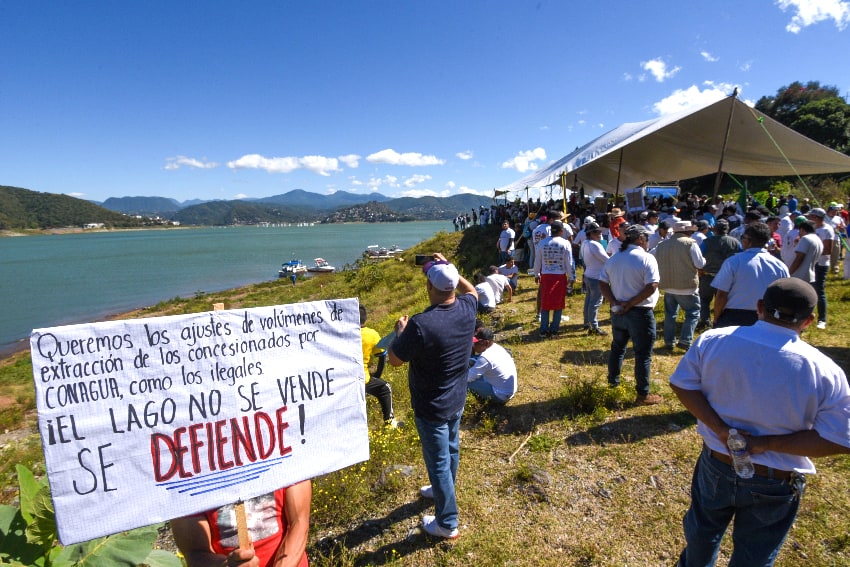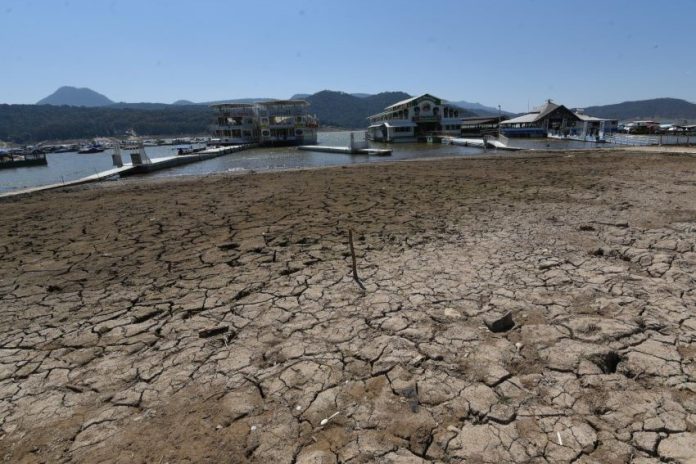The Valle de Bravo reservoir, located in the getaway destination of the same name southwest of Mexico City, is currently at its lowest level since 2016 according to the National Water Commission (Conagua).
The reservoir — officially called the Miguel Alemán Reservoir — is one of several lakes that form part of the Cutzamala System, the complex inter-basin transfer that supplies the country’s capital with approximately a quarter of its water.
At 28.7% capacity, the situation has prompted residents and service providers in Valle de Bravo to once again call on federal authorities to halt water extraction from the reservoir, at least for a few months.
“It has been weeks since the last rainfall, and the dam is not receiving any water, while large volumes continue to be drawn from it,” the owner of a floating restaurant on the lake told newspaper La Jornada.
According to residents, the water level of the dam is dropping by three to four centimeters daily and is now approximately 19 meters below its average level.
Meanwhile, newspaper Proceso reported that the dam is drying up because Mexico City has failed to fix broken pipes that waste much of its water.

“If there are resources, we can begin to repair the leaks, especially in Mexico City,” Claudia Suárez, a Valle de Bravo resident, told Proceso. “Forty percent of the water that comes out of the Cutzamala System is lost in leaks. This is criminal,” she stressed.
In addition to leaks in water pipes, La Jornada reported that residents blame the uncontrolled construction of private dams and cisterns by “suspiciously rich and powerful” new neighbors for at-home use as factors that contribute to the drying up.
However, a local architect who has built many luxury homes in Valle de Bravo and who asked to remain anonymous told Proceso that the private dams are not the problem, since they are small and require little water. Instead, he stressed that the leaks in Mexico City’s pipes are the issue.
Last month, a group of protesters gathered in Mexico City to demand a solution to the Cutzamala System’s water supply problem.
Despite the residents’ call for action, they say that officials from Conagua and the Mexico City government have dismissed their concerns. They state that the capital has agreed to temporarily reduce water supplies to the more than 20 million residents of the Mexico City metropolitan area, claiming that the problem will be resolved in June when seasonal rains resume.
But for Moisés Jaramillo, one of the tourist boat operators around the lake, rainfall will not solve the problem.
“Last year, even when it rained, [the water level] continued to drop,” Jaramillo told Proceso.
Meanwhile, the latest national drought monitor report shows that 58% of Mexican territory suffers from some degree of drought as of March 15. The State of México and Michoacán – where the Cutzamala system is located – report drought in over 90% of their municipalities.
With reports from Proceso and La Jornada
